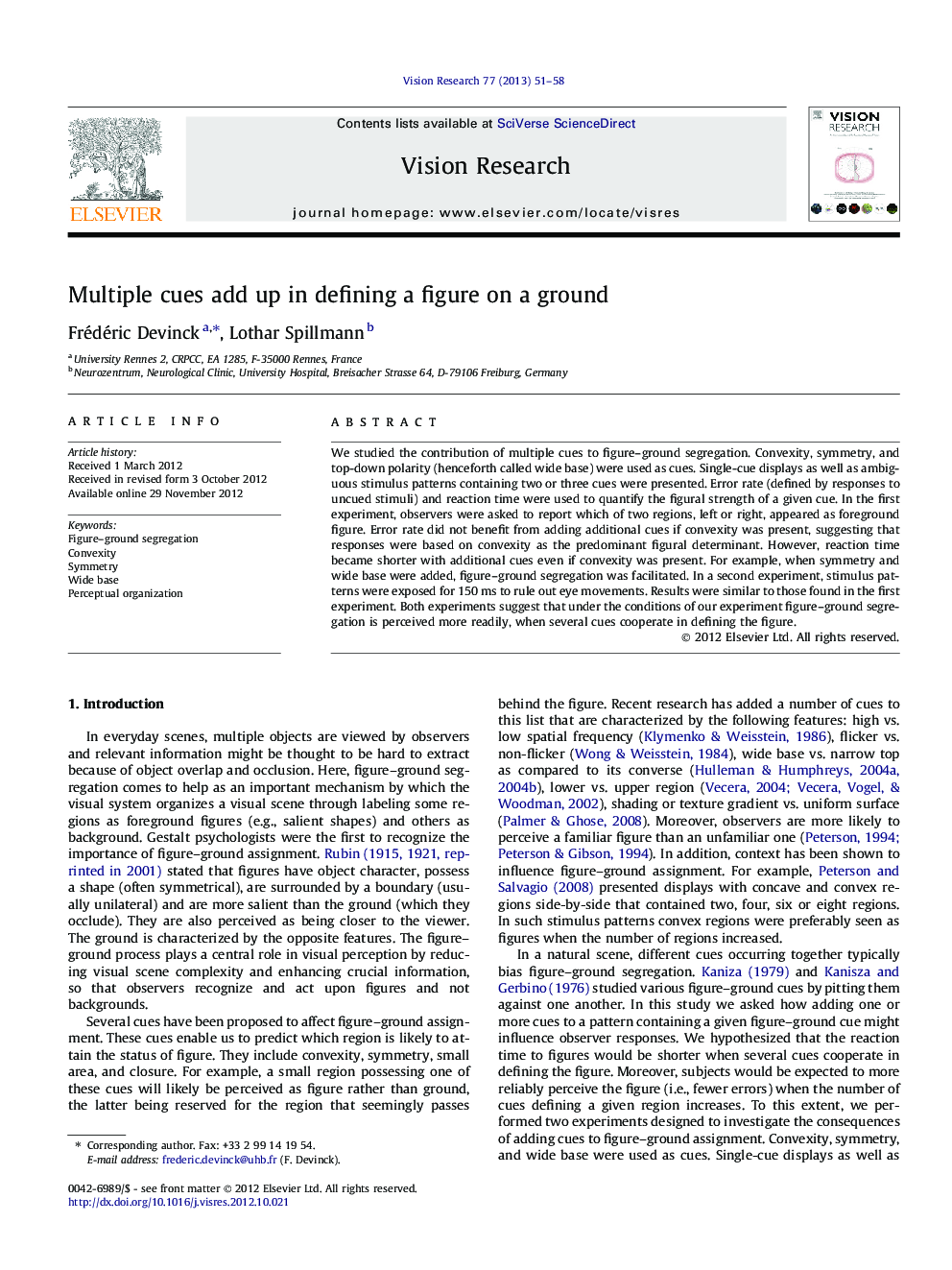| Article ID | Journal | Published Year | Pages | File Type |
|---|---|---|---|---|
| 6203620 | Vision Research | 2013 | 8 Pages |
We studied the contribution of multiple cues to figure-ground segregation. Convexity, symmetry, and top-down polarity (henceforth called wide base) were used as cues. Single-cue displays as well as ambiguous stimulus patterns containing two or three cues were presented. Error rate (defined by responses to uncued stimuli) and reaction time were used to quantify the figural strength of a given cue. In the first experiment, observers were asked to report which of two regions, left or right, appeared as foreground figure. Error rate did not benefit from adding additional cues if convexity was present, suggesting that responses were based on convexity as the predominant figural determinant. However, reaction time became shorter with additional cues even if convexity was present. For example, when symmetry and wide base were added, figure-ground segregation was facilitated. In a second experiment, stimulus patterns were exposed for 150Â ms to rule out eye movements. Results were similar to those found in the first experiment. Both experiments suggest that under the conditions of our experiment figure-ground segregation is perceived more readily, when several cues cooperate in defining the figure.
⺠We studied the contribution of multiple cues to figure-ground segregation. ⺠Reaction times were shorter when stimulus patterns containing two or three cues were added. ⺠When the convexity cue is presented in the displays, adding further cues did not reduce the number of errors only under certain conditions. ⺠The results obtained are not due to within-trial eye movements toward the multiple cue displays. ⺠Under the conditions of our experiment, the results provide evidence that several cues cooperate in determining figure-ground segregation.
